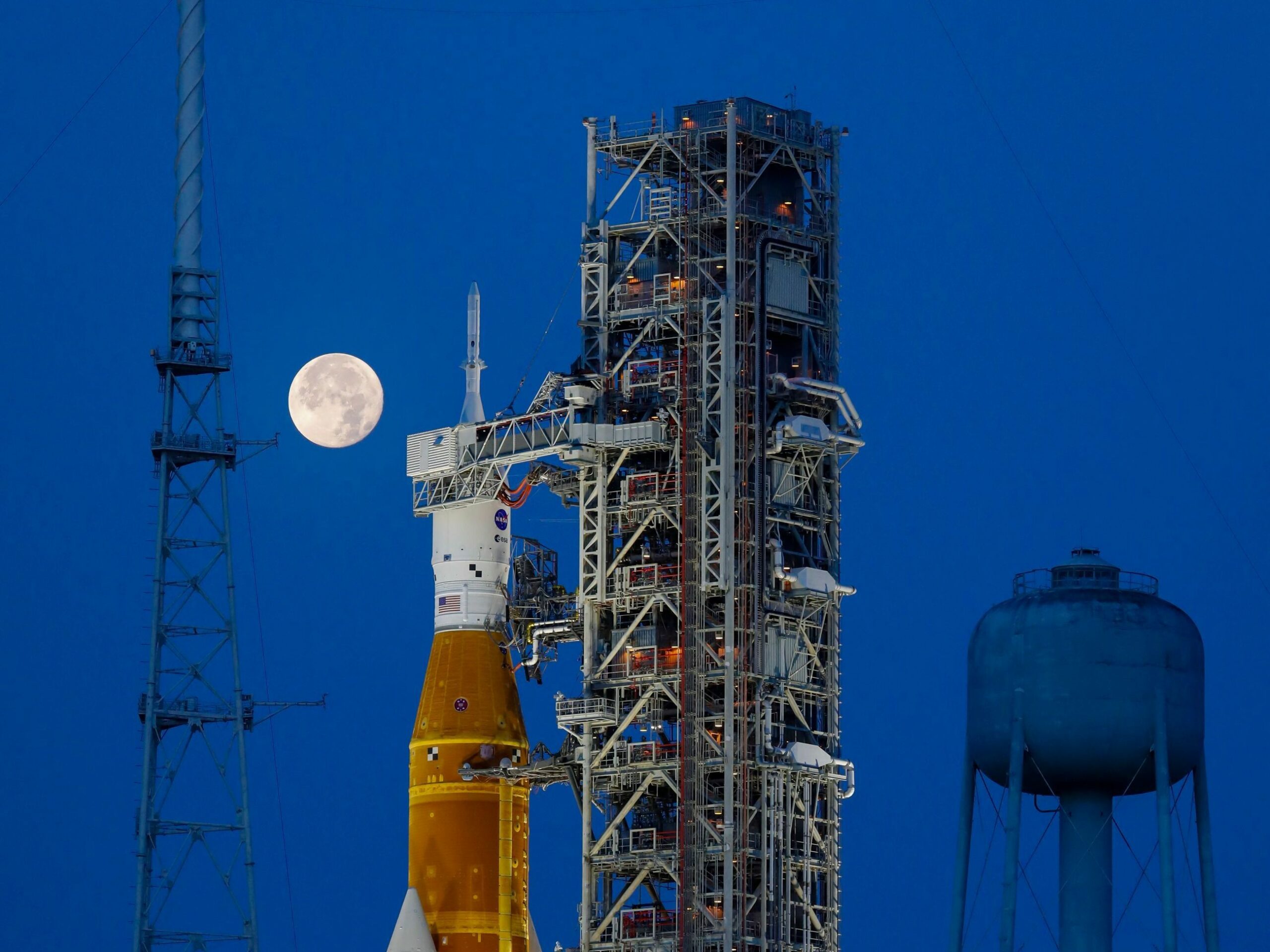The U.S. Space Force has been asked by NASA to grant two chances later this month to launch the Artemis I mission to the moon once more. However, in order to do so, NASA would also need to approve the repairs being made to the $4.1 billion rocket that is currently parked on the launch pad at Kennedy Space Center.
The Orion spacecraft would launch on a 26-day mission to circle the moon several times before splashing down in the Pacific Ocean on October 18. According to the mission profile for a Friday, Sept. 23 attempt, the launch window opens 80 minutes before 6:47 a.m. For a 40-day mission that would arrive on November 5, there is a Tuesday, September 27 possibility with a 70-minute launch window that begins at 11:37 a.m.
NASA is currently repairing cryogenic fuel lines from the mobile launcher into the Space Launch System rocket after two scrapes. After additional problems canceled the initial attempt on August 29, a leak in one pipe that was spewing liquid hydrogen during an attempt last Saturday prompted NASA to stand back once again.
The Eastern Range, which is in charge of defending the area from the dangers associated with rocket launches and is operated by the Space Force’s Space Launch Delta 45, has placed a 25-day restriction on the rocket, more precisely the batteries of its flight termination system.
On the launch pad, it is impossible to inspect the system’s batteries, which power its emergency self-destruction mechanism. To do that, the SLS would need to be wheeled back to the Vehicle Assembly Building. The 5.75 million-pound, 322-foot-tall SLS, mobile launcher, and Orion spacecraft assembly arrived at Launch Pad 39-B for the last time on August 16.
Artemis I would be able to stay at the launch site for the planned launch chances with the use of an Eastern Range waiver. Due to the location of the Earth and moon, the Artemis I mission has a limited number of window opportunities per month to complete the voyage. The most recent window concluded on September 6, and the next one begins on September 19 and lasts until October 4.
In a news conference on Thursday, Jim Free, assistant administrator for the Exploration Systems Development Mission Directorate at NASA, said, “We’ll continue to work with our excellent partner in the range as they review the realism and practicality of our waiver request.” And without a doubt, if they decide that it’s the wrong thing to do, we will undoubtedly back them, halt the launch, and hunt for a new opportunity.
However, if the Eastern Range declines to provide the waiver, Artemis I would be forced to pull back and start looking for launch possibilities in the future. That would include waiting until the periods that are open from October 17 through October 31, November 12 through November 27, and December 9 through December 23.
Free also wanted to emphasize how amazing of a partner SLD 45 and Brigadier General Stephen Purdy have been. Free added, “Gen. Purdy and his staff have really been wonderful at listening to where we want to go and giving us their opinions, and us making sure we understand their needs and concerns. “That is their range, and it is our responsibility to abide by their demands. That is what we shall do.
Whatever the Eastern Range’s decision, NASA must approve the current modifications it is putting in place. On the major troublesome line at the connection, known as the quick disconnect, NASA said on Tuesday that it intended to replace a seal. Wet dress rehearsals in April and June, as well as the initial launch attempt, were beset by cryogenic liquid hydrogen leaks.
Once repaired, it will do a tanking test at the pad, where it may use cryogenic fuel, something it cannot accomplish in the VAB, which has the advantage of being more convenient. The tanking test is scheduled for September 17. The fuel loading buggers that prompted the scrubs have influenced how they will proceed with future tanking efforts, according to Mike Bolger, Exploration Ground Systems program manager at KSC.
He said that it was a “kinder and gentler approach to tanking.” “We believe it might lessen the strain that pulses or rapid shifts have on seals. We’re thus hopeful that we can solve this issue and have a successful tanking by changing the seals, going through this cryo event, and making the tanking procedure as painless as possible.
The core stage must be fueled with 196,000 gallons of liquid oxygen and 537,000 gallons of liquid hydrogen before liftoff in order to feed the four RS-25 engines at the base of the core stage, which along with two solid rocket boosters will provide 8.8 million pounds of thrust to the SLS.
When it blasts off into space, it will do so with more thrust than any other rocket before it. “The group is moving forward quite well. Morale is high, and we’re still enthusiastic about our chance, according to Bolger. We’ll launch when we’re ready, as always. We spoke with our team last week; while it wasn’t our week, we know it will come, and we’re looking forward to it.
Source: American Military News

